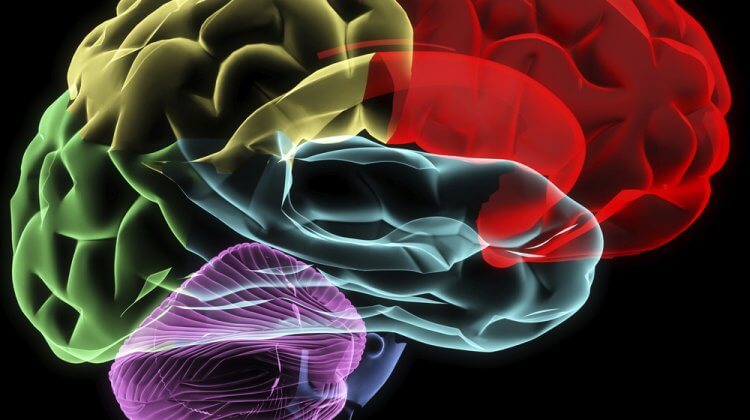
Summary
The psychological and behavioural effects of endogenous testosterone levels and anabolic-androgenic steroids in males have been investigated for over 50 years in both clinical and nonmedical uses, including the influence of anabolic-androgenic steroids on the nervous system and neuromuscular expression as a mechanism for behavioural and ergogenic effects. The relationship between moods, behaviour and endogenous plasma testosterone levels, as well as anabolic steroids and corticosteroid administration has been studied, including psychological dependence, withdrawal effects, and major methodological issues. While a relationship between endogeous testosterone levels and aggressive behaviour has been observed in various animal species, it is less consistent in humans. It can be concluded that, although the use of exogenous anabolic-androgenic steroids may have psychological and behavioural effects in some patients and athletes, the effects are variable, transient upon discontinuation of the drugs, and appear to be related to type (17a -alkalated rather than 17b -esterified), but not dose, of anabolic-androgenic steroids administered. The roles of genetic factors, medical history, environmental and peer influences, and individual expectations are likewise unclear. In general, the evidence at present is limited and much additional research will be necessary for a complete understanding of this relationship.
———-
More than 500 steroidal substances have been identified in human/mammalian/vertebrate tissues (Kochakian 1990). There are 5 major groups of steroids produced in mammals, which are generally recognised on the basis of their physiological actions: glucocorticoids, mineralocorticoids, androgens, estrogens, and progestins. These classes of hormones are structurally similar and arise from a common series of pathways. They are distinguished by their actions on one or more specific steroid hormone receptors. The hormone-receptor complexes function as tissue-specific transcriptional regulators of distinct domains of genes and, consequently, exert their broad array of effects.
The most potent sex steroid produced in human males is testosterone. Testosterone has been chemically characterised (David et al. 1935; Ruzicka & Wettstein 1935) and more than 100 derivatives synthesized (Potts et al. 1976; Vida 1969), some of which have found uses in human and veterinary medicine, animal husbandry, and most recently, in athletics. Virtually all cells in the body are potential targets for these steroids. Furthermore, since all steroids exert their effects in the same above-mentioned manner, anabolism (tissue building) differs from androgenicity (masculinising) only in location (which differ in number of receptors and steroid metabolising enzymes) and not in essence (Kruskemper 1968). A purely anabolic steroid has not been found and, therefore, Kochakian (1976) suggests that the appropriate nomenclature should refer to anabolic-androgenic steroids, a recommendation that will be adhered to in this review.
Anabolic-androgenic steroids promote tissue growth by stimulating the synthesis and retarding catabolism of protein (Kochakian 1976; Kruskemper 1968; Overbeek & deVisser 1961). When administered to experienced athletes engaged in a vigorous training programme, therapeutic doses of anabolic-androgenic steroids promote small but significant increases in strength and lean body mass relative to those that would occur from training alone (American College of Sports Medicine 1984; Haupt & Rovere 1984; Wright 1980).
The psychological and behavioural aspects of maleness were noted by Aristotle prior to 300 BC and were studied in numerous uncontrolled experiments up through the 1800s, which sought to demonstrate that the testes contained substances which produced and maintained vitality, strength, energy and youthfulness (Brown-Sequard 1889). The effects of purified sex hormones, including those on mood and mental disorders, began to be experimentally and clinically explored more intensively a half century ago when commercial preparations became available (Miller et al. 1938; Salmon & Geist 1943; Samuels et al. 1942; Vest & Howard 1938). Since that time, a number of literature reviews have reported on these and other effects (Choi et al. 1989; Haupts & Rovere 1984; Hickson et al. 1989; Kochakian 1976; Kopera 1985; Kruskemper 1968; Lamb 1984; Taylor 1982; Wilson 1988; Wilson & Griffin 1980; Wright 1978, 1980; Wright & Stone 1985).
Testosterone preparations were rather widely and successfully used in the treatment of involutional psychoses, melancholia and depression for many years (Altschule & Tillotson 1948; Ault 1937; Beumont et al. 1972; Burnett 1963; Dnaziger & Blank 1942; Guirdham 1940; Hamilton 1937; Heller & Myers 1944; Itil 1976; MacMaster & Alamin 1963; Sansoy et al. 1971; Tec 1974; Thomas & Hill 1940; Vogel et al. 1985; Werner 1939, 1943; Werner et al. 1934; Wynn & Landon 1961). However, in contrast to these earlier findings, more recent focused clinical reports have suggested that affective and psychotic syndromes, some of violent proportions, may be associated with the use of anabolic-androgenic steroids in particular individuals (Annitto & Layman 1980; Choi et al. 1989; Conacher & Workman 1989; Freinhar & Alvarez 1985; Katz & Pope 1990; Pope & Katz 1987, 1988, 1990).
Several cases have recently been reported (Coacher & Workman 1989; Editorial 1988b,c,d,e; Lubell 1989; Maryland v. Michael D. Williams 1986; Moss 1988) wherein presumed psychological and behavioural effects of anabolic-androgenic steroids are alleged by defendants to have significantly influenced the commission of criminal acts. This legal strategy has been identified in the popular press as the ‘dumbbell defense’ (Editorial 1988c). The purported behavioural effects of anabolic-androgenic steroids, the consequent legislative impact and educational requirements, and the growing number of competitive and recreational athletes of both sexes and virtually all ages using anabolic-androgenic steroids (Anderson & McKeag 1985, 1989; Buckley et al. 1988; Burkett & Falduto 1984; Dezelsky et al. 1985; Frankle et al. 1984; Government Accounting Office 1989; Moore 1988; Newman 1986; Pope et al. 1988; Yesalis 1989; Yesalis & Friedl 1988; Yesalis et al. 1988, 1990a), dictate the need for a comprehensive and critical review of the relevant literature.
The purposes of this paper are to review: (a) selected aspects of the history and prevalence of anabolic-androgenic steroid use in competitive sports; (b) some effects of androgens on the central and peripheral nervous system; (c) the relationship between endogenous plasma testosterone levels and mood and behaviour in normal males and in prisoner populations; (d) the effects of the clinical use of anabolic-androgenic steroids on mood and behaviour in hypogonadal males and depressed patients; (e) the relationship of anabolic-androgenic steroid use to aggression and mental health in athletes, including issues of psychological dependence and withdrawal; and (f) the major relationship between anabolic-androgenic steroid administration, mood and behaviour.
Part 1: History of Anabolic-Androgenic Steroid Use in Competitive Sports and Medicine
Originally appearing in Sports Medicine 10(5) 303-337. 1990. Copyright © 1990 by Adis International Limited. All rights reserved. Reprinted by MESO-Rx with permission. Any duplication of this document by electronic or other means is strictly prohibited.
About the author
Warning: Undefined array key "display_name" in /home/thinksteroids/public_html/wp-content/plugins/molongui-authorship-pro/includes/hooks/author/box/data.php on line 11
Warning: Undefined array key "display_name" in /home/thinksteroids/public_html/wp-content/plugins/molongui-authorship-pro/includes/hooks/author/box/data.php on line 11
Warning: Undefined variable $show_related in /home/thinksteroids/public_html/wp-content/plugins/molongui-authorship/views/author-box/parts/html-tabs.php on line 30



Leave a Reply
You must be logged in to post a comment.